Small-molecule inhibition of glycogen synthase 1 for the treatment of Pompe disease and other glycogen storage disorders
- PMID: 38232139
- PMCID: PMC10962247
- DOI: 10.1126/scitranslmed.adf1691
Small-molecule inhibition of glycogen synthase 1 for the treatment of Pompe disease and other glycogen storage disorders
Abstract
Glycogen synthase 1 (GYS1), the rate-limiting enzyme in muscle glycogen synthesis, plays a central role in energy homeostasis and has been proposed as a therapeutic target in multiple glycogen storage diseases. Despite decades of investigation, there are no known potent, selective small-molecule inhibitors of this enzyme. Here, we report the preclinical characterization of MZ-101, a small molecule that potently inhibits GYS1 in vitro and in vivo without inhibiting GYS2, a related isoform essential for synthesizing liver glycogen. Chronic treatment with MZ-101 depleted muscle glycogen and was well tolerated in mice. Pompe disease, a glycogen storage disease caused by mutations in acid α glucosidase (GAA), results in pathological accumulation of glycogen and consequent autophagolysosomal abnormalities, metabolic dysregulation, and muscle atrophy. Enzyme replacement therapy (ERT) with recombinant GAA is the only approved treatment for Pompe disease, but it requires frequent infusions, and efficacy is limited by suboptimal skeletal muscle distribution. In a mouse model of Pompe disease, chronic oral administration of MZ-101 alone reduced glycogen buildup in skeletal muscle with comparable efficacy to ERT. In addition, treatment with MZ-101 in combination with ERT had an additive effect and could normalize muscle glycogen concentrations. Biochemical, metabolomic, and transcriptomic analyses of muscle tissue demonstrated that lowering of glycogen concentrations with MZ-101, alone or in combination with ERT, corrected the cellular pathology in this mouse model. These data suggest that substrate reduction therapy with GYS1 inhibition may be a promising therapeutic approach for Pompe disease and other glycogen storage diseases.
Figures



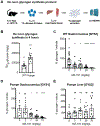
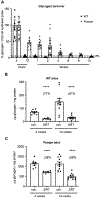
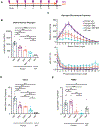
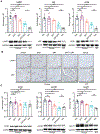
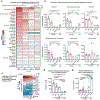
Comment in
-
Expanding therapeutic options for Pompe disease: a new small molecule inhibitor of glycogen synthase 1 (GYS1) shows preclinical promise in Pompe disease.Ann Transl Med. 2024 Dec 24;12(6):123. doi: 10.21037/atm-24-135. Epub 2024 Nov 15. Ann Transl Med. 2024. PMID: 39817232 Free PMC article. No abstract available.
References
-
- Roach PJ, Glycogen and its metabolism. Curr. Mol. Med 2, 101–120 (2002). - PubMed
Publication types
MeSH terms
Substances
Grants and funding
LinkOut - more resources
Full Text Sources
Molecular Biology Databases
Research Materials
Miscellaneous

